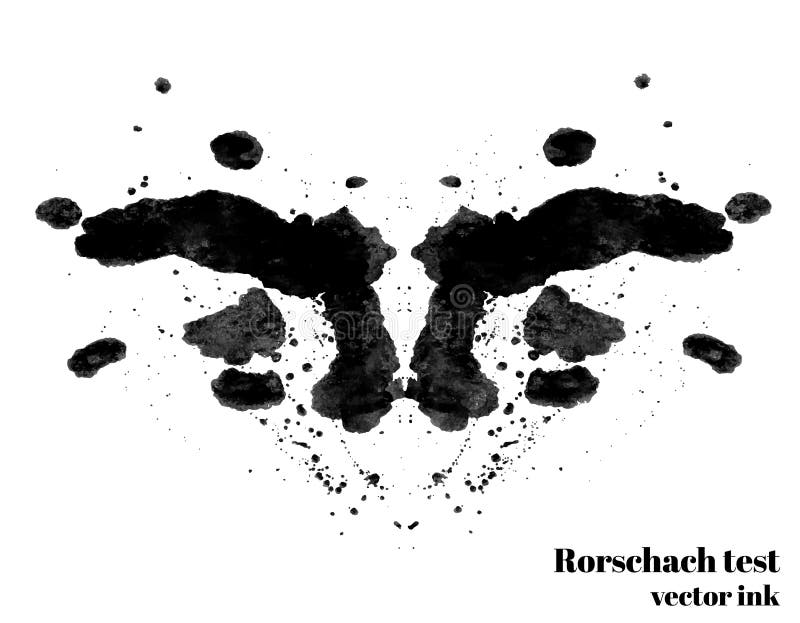

And by the time Rorschach was working as a doctor, there were even a few others who were using inkblots to test human subjects on how “imaginative” they were, by counting up the number of answers a person could come up with when looking at an inkblot, no matter how bizarre or nonsensical they might be.īut Rorschach’s interest was not in questions of “imagination,” but rather in perception. In fact, “klexogaphy”- trying to pull meaning from accidental blots of ink - was a fairly common childhood game. Searls cannot pinpoint the exact moment when Rorschach first had the idea to use inkblots to access those “secret stories,” to try and get a read on the inner core of a person’s psychology, but he points out an interesting detail: Rorschach - whose father had been a painter, and who himself was deeply visual - was nicknamed “Klex” as a university student, the German word for inkblot. Jung told his audiences of students and followers that their “secret stories” were more integral to the field of psychology than any dry scientific or statistical method could ever hope to be.

Jung was spreading the revolutionary idea of the unconscious mind: that truth roils below the surface of what we can see. In fact, as a student in Zurich, Rorschach had directly encountered one of psychoanalysis’s great stars and proponents, Carl Jung, whose university lectures he attended. By the time Rorschach was a qualified doctor, psychoanalysis, with its emphasis on the unseen, on buried urges and repressed desires, was captivating thinkers well outside of Freud’s Vienna. It was the first decades of the 20th century, and psychiatry was undergoing a significant upheaval.
Psychologist ink blot test how to#
There, Rorschach puzzled over how to help his patients. Attracted to all things Russian, he married a Russian woman - a fellow psychiatrist - and the two settled in the Swiss town of Herisau, where they worked at the local mental asylum. In his letters, Rorschach is utterly charming: witty, irreverent, compassionate, and feminist. Searls has been on the Rorschach trail awhile, becoming intrigued with the subject around 2010, and visiting Bern, Switzerland, to see for himself what might be available in the archives for a would-be biographer. “They’re the ten most-looked-at images of the 20th century, probably,” Searls told me last week. She continued to use the line for the next two and a half decades. “I’m a Rorschach test,” Hillary Clinton first said in 1993, by which she meant: You can tell a lot about a person by how he reacts to me. “Because according to the peer-reviewed science, it’s at least as well-supported as any other personality test, and that’s after being subjected to more scrutiny than most.” Searls, a writer and translator, provides a rich cultural history of the Rorschach test, along with the first proper biography of Hermann Rorschach himself.īy now, the Rorschach images have been looked at and puzzled over by millions of people they’ve transcended their status as psychological test and become cultural metaphor, endlessly accommodating in their stretch.

“I often find myself asking why everyone is so skeptical of the Rorschach test,” says Damion Searls, the author of a new book on the subject, The Inkblots. And even as research on human psychology has raced ahead, as high-tech machines have arrived to examine the human brain in ways never before possible, there is something about these Rorschach images that keeps them in psychology’s armament still. They are admissible in court, used as evidence in custody battles they are considered scientific enough to be reimbursed by insurance companies.

A century later, these iconic blots remain one of the most studied and popular personality tests in the United States. These are among the many, many answers that have been offered up in the century since Hermann Rorschach, a dashing young Swiss psychiatrist, first invented his inkblot test, and psychologists the world over began asking their patients: What might this be? The ten images Rorschach designed in a feverish period from 1917 to 1918 are the same images that psychologists still use to try and assess those aspects of human psychology that other, more straightforward exams might miss. Photo: Spencer Grant/Getty Images/Science SourceĪ bird.


 0 kommentar(er)
0 kommentar(er)
